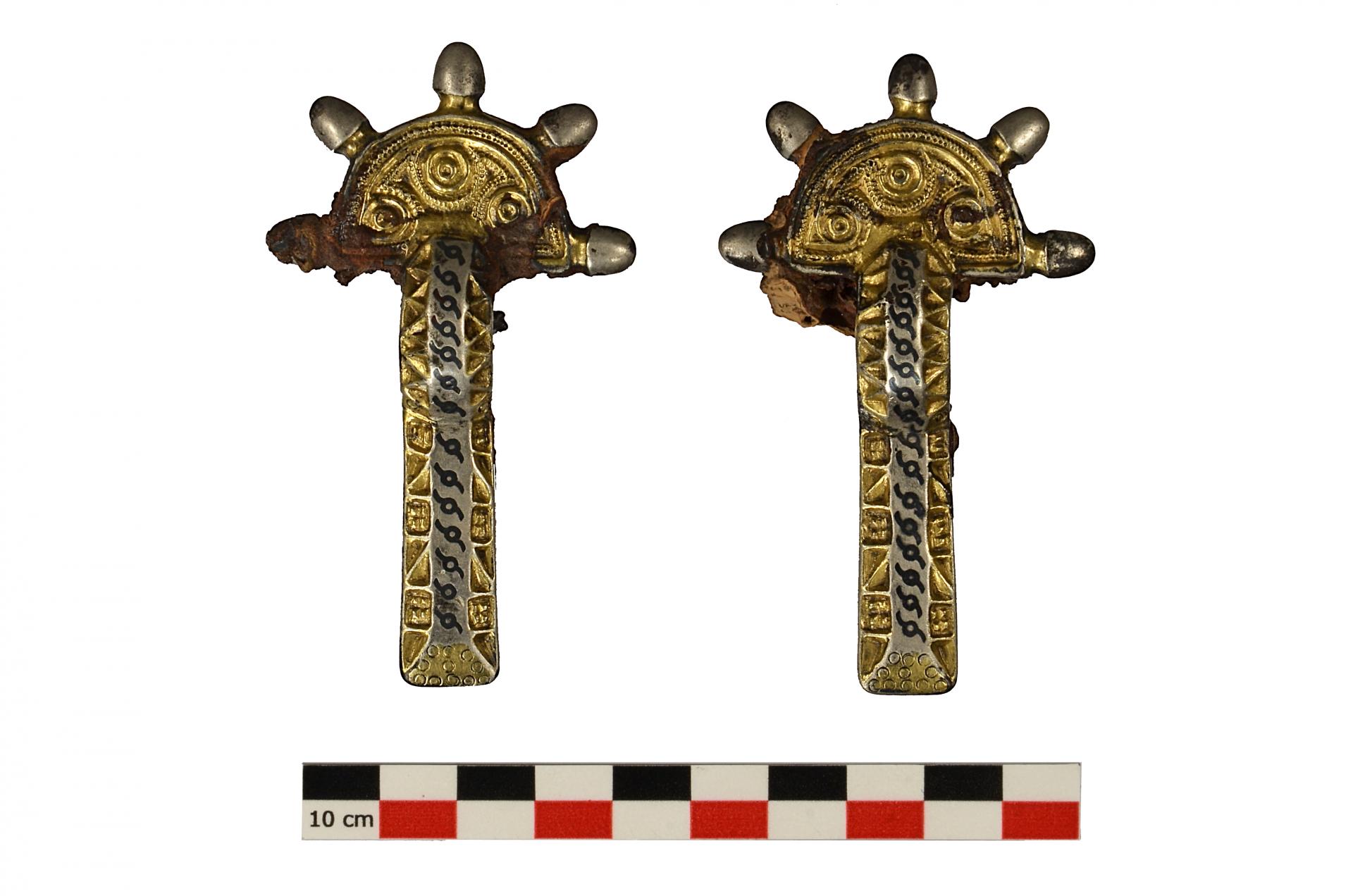Hezký stěhováci.
Nebyla to spíš hrobová výbava, než nábytek?
Ancient burial site with rich equipment reveals new facts
Categories: Castles, strongholds and extinct places , Nálezy nejenom s detektorem v západní Evropě
Excavations of a burial site in the ancient Roman city of Boutae in southeastern France have revealed richly furnished Germanic tombs dating from between the second half of the 5th century and the second half of the 7th century. Research suggests that a stable Burgundian population lived in the Rhineland as early as 443.
Boutae was founded in 27 BC as a satellite town of the capital of the Gallic tribe of the Allobroges. It is located at the junction of three main Roman roads and the Alpis Graia route, leading to the Petit Saint-Bernard Alpine pass. Since the second half of the 1st century AD, the town has been situated on a triangular area of thirty hectares. It had a public square and a forum with a basilica, thermal baths and a theatre...
Boutae prospered under Roman rule. In the middle of the 3rd century it was demolished and much of the population killed by Germanic invasions, but it was rebuilt again during the 3rd century. In the early 5th century the city was partially depopulated by the Burgundian invasion, but some parts of the city were inhabited until the end of the 7th century.
The presence of late antiquity graves on the west side of the city has been known since the 19th century, but until last year the necropolis had not been thoroughly investigated and documented. Archaeologists from the National Institute for Preventive Archaeological Research (INRAP) have explored almost half of the acropolis, uncovering 227 graves. Even so, this is only a fraction of the total number of graves, of which there are a number of types represented; including various wooden formations, cobbled trunks or sandstone slabs.
With a few exceptions, the graves are orientated in a NW-SE direction. Thirty of the graves contained luxury and high quality furniture, most often belonging to a regional representation of the Alamanni culture, as is the case in Lake Geneva and in the Rhine valley around Basel. The decorative style defines the grave furnishings as Burgundian.
Among many other objects, the following have been uncovered. Bone combs, glass beads in necklaces and chatelaines, belted buckles, shoe and belt buckles, a three-piece toilet cleaning kit silver and gilded fibula in the shape of a bird of prey with a garnetm eye and a set of galloping horses, a gilded silver bracelet and much more... Only two weapons were found: An arrowhead and a scramasax (a long single-sided dagger) with a fragment of a wooden scabbard still attached.
The dating of the burial site by radiocarbon dating, the nature of the furniture and the anthropological characteristics make a strong case for an earlypresence of a Burgundian population in Boutae, which settled there from 443 onwards as part of a new kingdom whose capital was Geneva.
Roman Nemec






Silver and gilt fibulae with string decoration

Bird-shaped fibula - gilded silver and garnet

Mascara - eyeshadow brush

Gilt silver bracelet

Gold and silver with garnet embellishment
Sources: inrap.fr, thehistoryblog.com
The article is included in categories:
- Archive of articles > Castles, strongholds and extinct places
- Archive of articles > Archaeology > Finds and rescue research abroad > Nálezy nejenom s detektorem v západní Evropě
Post
https://www.inrap.fr/fouille-d-une-importante-necropole-au-vicus-de-boutae-annecy-haute-savoie-14997
Díky za článek. Krásné věci, je samozřejmě důležité tyto nálezy prozkoumat, ale jen já za sebe-stejně mi je to proti srsti obírat mrtvé v hrobech o jejich věci, které pro ně byly důležité v jejich životě. 
MarkyMark - díky, přesně takhle to vidím i já. Měj se fajn. 







